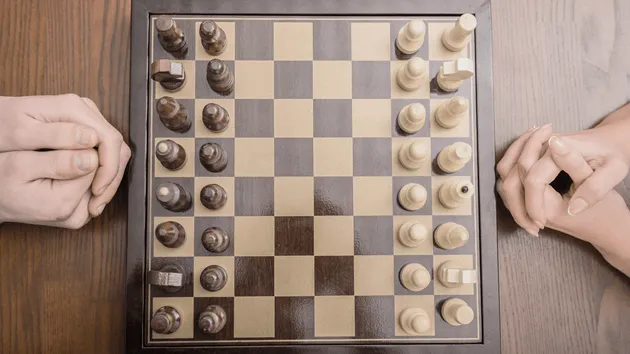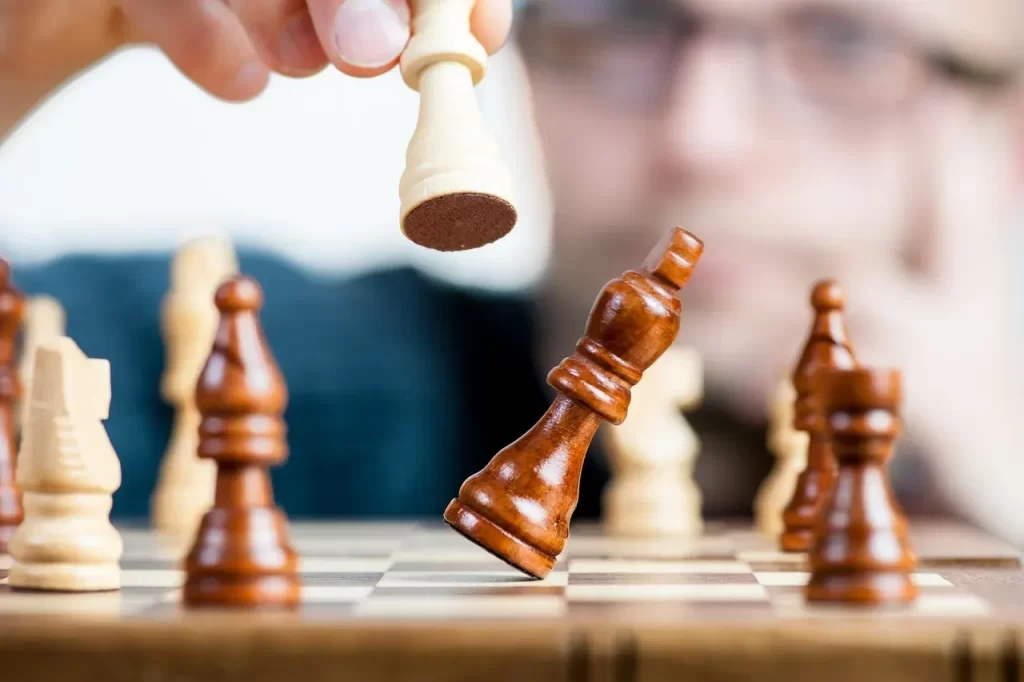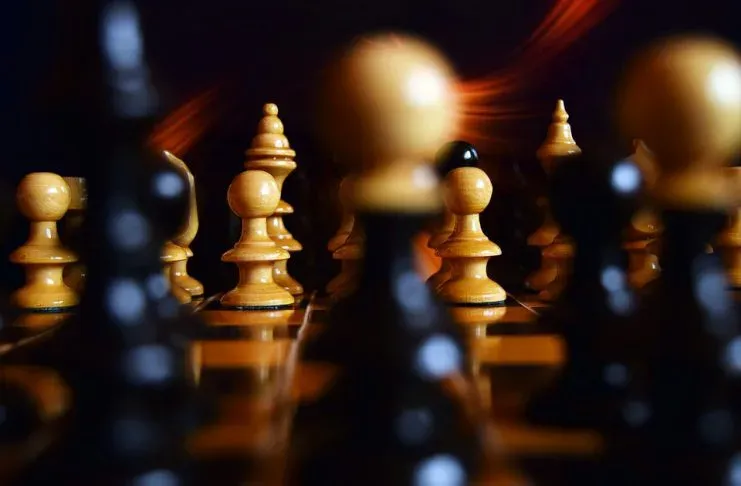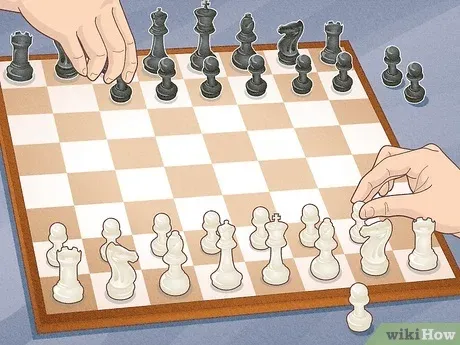UDBET shares basic rules for playing chess for beginners. Instructions on how to move each piece and the rules of the game, in just 5 minutes you can interact with everyone. However, first, let’s learn some more information about chess!
Chess board and pieces in rules for playing chess

The chess board consists of 8 vertical squares and 8 horizontal squares, so there are a total of 4 squares divided into 2 colors: black and white. Of course, pieces are only allowed to move in chess. Each piece will have its own movement style, which I will guide later. Unlike Chinese chess, there are arcs and rivers. Chess determines the position of pieces using coordinates marked on the edge of the board.
How to arrange a chessboard
Place the chessboard so that the square in the bottom right corner is white. Both sides will have a white square in the bottom right corner of their part of the board. The way the chessboard is arranged on both sides is the same if viewed from each side’s perspective.
Place a rook in each of your corner squares
Let’s start with the Rook pieces – the pieces move horizontally (in rows) or vertically (in columns). Place two Rook pieces at two corners of the board. With a new style chess board, for example, a set of chess pieces adapted from characters in Civil War or a certain movie, you will not be able to identify the chess pieces if you do not know the symbol (or legal symbol) of each piece. . These symbols are often printed on the bottom of the chess pieces.
Place the Knight next to the Rook
The Knight, outwardly resembling a horse, is placed next to the Rook. The code moves in 3 tiles in an “L” shape: first move 2 tiles in any direction, then 1 tile in a perpendicular direction, or move 1 tile in any direction then 2 tiles in a perpendicular direction.
Code only goes in rows and columns, never diagonally. The knight can jump over other pieces to move and is the only piece allowed to do so. This is also the only piece that does not move in a straight line.

Place the Bishop next to the Knight
The bishop is a tall chess piece with a round head and stands next to the Knight. The statue only moves diagonally. The statue on the left is placed on a black square (and will always move on black squares). The statue on the right is placed on a white square (and will always move on white squares).
Place the Queen on the square with the same color as it
If you hold the white piece, your Queen must be on the remaining white square in the middle of the first row. If you hold the black piece, the Queen must lie on the remaining black square. The queen is one of the tallest pieces on the board with a pointed crown. The queen can move horizontally, vertically, or diagonally without a limit on the number of squares, so this is the strongest piece on the chessboard.
Place the King on the last square
The king is usually the tallest piece on the chessboard with a round crown with a cross-shaped tip. The king can move in any direction, but can only move 1 square at a time. You need to use all the remaining pieces to protect the King. You will lose chess when you lose the King.
Place the pawns on the second row
Once the key pieces have been placed on the first row, continue to place the lesser pawns on the second row as a protective wall. Pawns can move forward 1 space per turn, but they also have a few other special moves. After placing the pieces correctly according to the instructions above, both sides are ready to play chess.
Rules for playing chess – White goes first

White chooses whichever piece he wants to move to make the first attack, also known as the opening. White moves one piece, then Black moves one piece.
- Do not attack during the opening. When opening, you just need to move the pieces to their most useful position. You need to place them in beneficial and safe locations.
- Normally, you should only spend 1 or 2 moves with pawns. Then, focus on the other stronger pieces — Bishops, Knights, Queens, and Rooks. The “Deployment” phase (moving pieces to important squares, for example, the center) is not considered complete if all the above pieces have not been moved.
- A lot of your opening moves depend on your opponent — you have to get a feel for the game yourself. So, observe and guess what the opponent’s intentions are. Chess is a subject that focuses on predicting situations and predicting risks more than any other game.
Take turns
You and your opponent take turns, trying to capture the King and each other’s pieces. You will have the upper hand if you can threaten your opponent’s Queen or King and force your opponent on the defensive, but there are countless ways a player can win.
- The pawn seems to be very entangled, but don’t “give away the pawn” too quickly. When the pawn reaches the opponent’s last row, it will turn into another pawn (except the King)! Usually, people choose to turn the Queen, but you can turn the Pawn into a Rook, Knight or Bishop. You can completely reverse the situation of the game if you can move the pawn to the other side when your opponent is not paying attention.
Some cases were settled amicably

- Draw Agreement: If two players agree that neither side can win or there is no way to win, they can agree to a draw.
- Repeat positions: If an identical position is repeated at three different points in the game, a draw is declared. For example, if both sides continue to move the Knight back and forth on a number of squares, the game results in a draw.
- Draw by 50-move rule: If both players do not move a pawn or capture any piece for 50 consecutive turns, the game is declared a draw. This rule prevents the parties from prolonging the game and also prevents the parties from intentionally exhausting the other party.
- When there are not enough forces: If both sides do not have enough forces left to checkmate the opponent’s King, the game is considered a draw. For example, a Knight and a King cannot checkmate the opponent’s lone King.
- If all other pieces except the King have been captured and eliminated from the game. This is an example of insufficient force, as a King cannot checkmate or even checkmate the other King on his own. The game will result in a draw.
Conclusion
In conclusion, chess is not just a game. It is a metaphor for life, a way of thinking, a way of training your mind. Rules for playing chess teach us to think ahead, to anticipate our opponent’s moves, and to adapt to changing circumstances. It also teaches us to be patient, to take risks, and to never give up. Chess is a game that can teach us a lot about ourselves and the world around us.